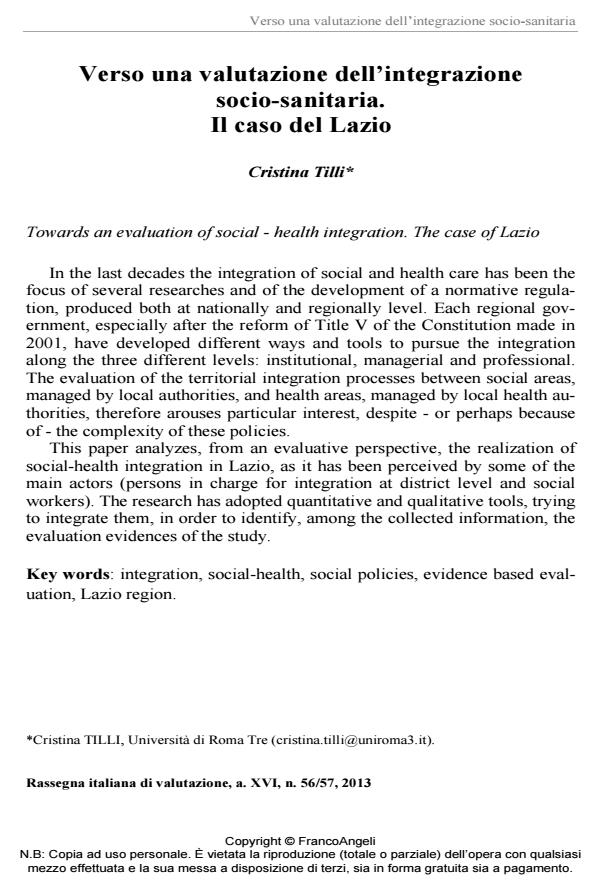Towards an evaluation of social - health integration. The case of Lazio
Journal title RIV Rassegna Italiana di Valutazione
Author/s Cristina Tilli
Publishing Year 2014 Issue 2013/56-57
Language Italian Pages 27 P. 171-197 File size 197 KB
DOI 10.3280/RIV2013-056009
DOI is like a bar code for intellectual property: to have more infomation
click here
Below, you can see the article first page
If you want to buy this article in PDF format, you can do it, following the instructions to buy download credits

FrancoAngeli is member of Publishers International Linking Association, Inc (PILA), a not-for-profit association which run the CrossRef service enabling links to and from online scholarly content.
In the last decades the integration of social and health care has been the focus of several researches and of the development of a normative regulation, produced both at nationally and regionally level. Each regional government, especially after the reform of Title V of the Constitution made in 2001, have developed different ways and tools to pursue the integration along the three different levels: institutional, managerial and professional. The evaluation of the territorial integration processes between social areas, managed by local authorities, and health areas, managed by local health authorities, therefore arouses particular interest, despite - or perhaps because of - the complexity of these policies. This paper analyzes, from an evaluative perspective, the realization of social-health integration in Lazio, as it has been perceived by some of the main actors (persons in charge for integration at district level and social workers). The research has adopted quantitative and qualitative tools, trying to integrate them, in order to identify, among the collected information, the evaluation evidences of the study.
Keywords: Integration, social-health, social policies, evidence based evaluation, Lazio region.
Cristina Tilli, Verso una valutazione dell’integrazione socio-sanitaria. Il caso del Lazio in "RIV Rassegna Italiana di Valutazione" 56-57/2013, pp 171-197, DOI: 10.3280/RIV2013-056009